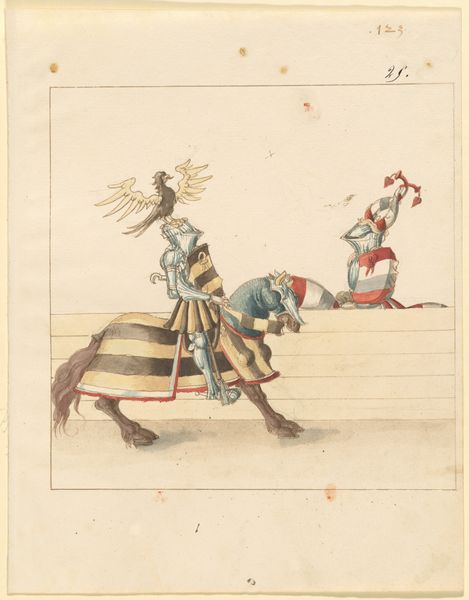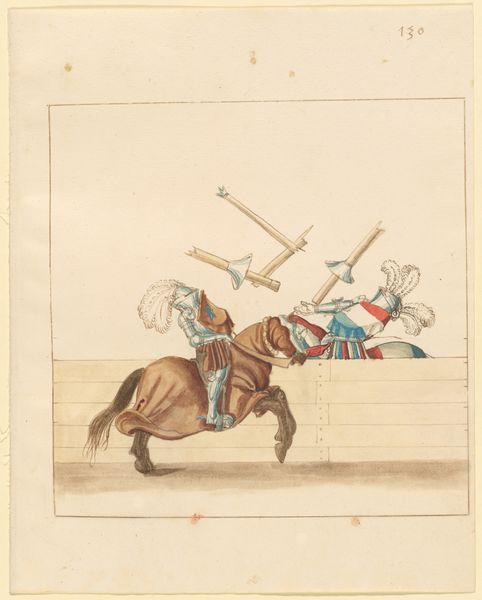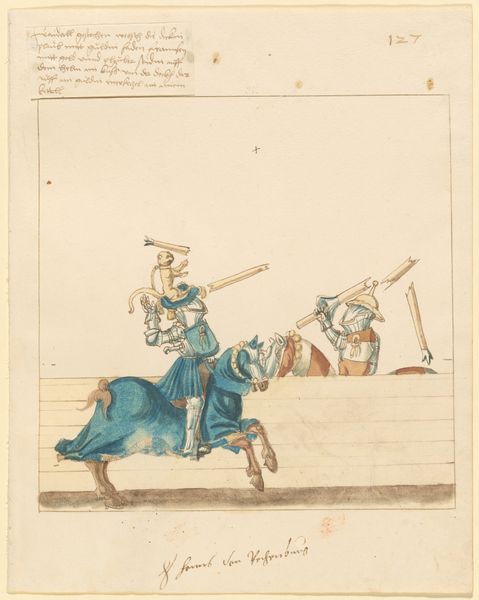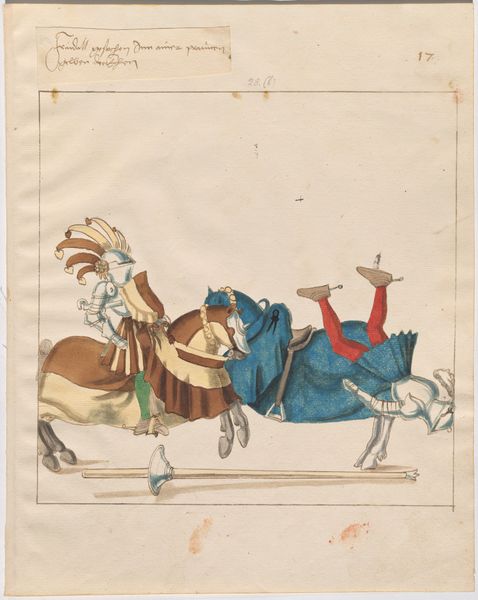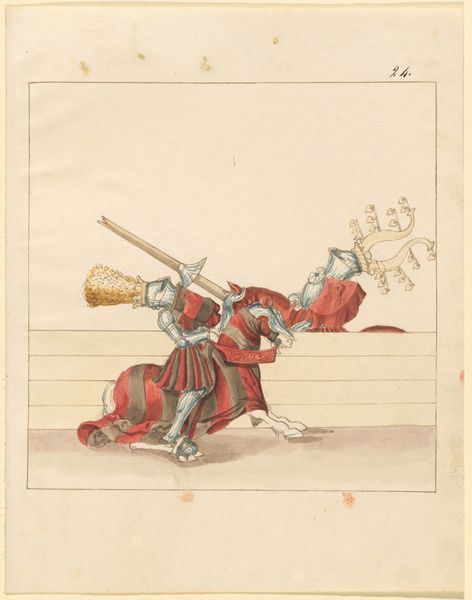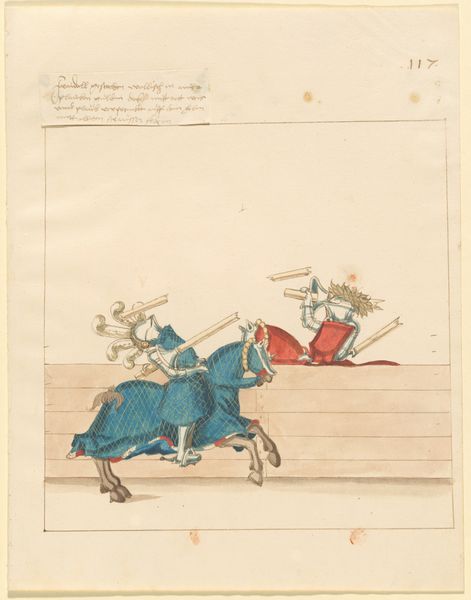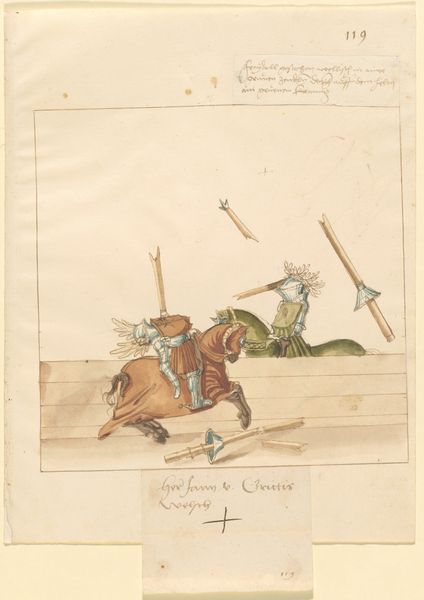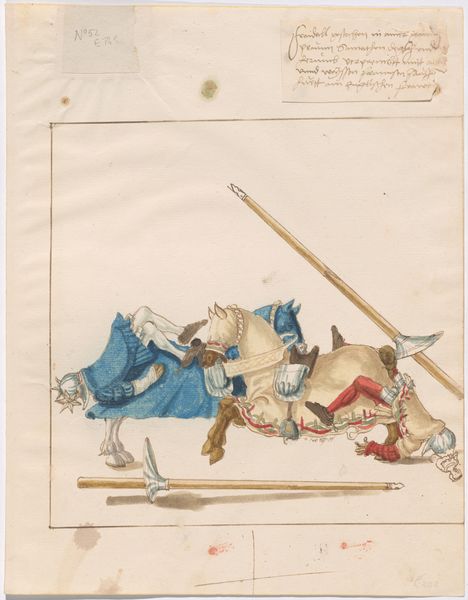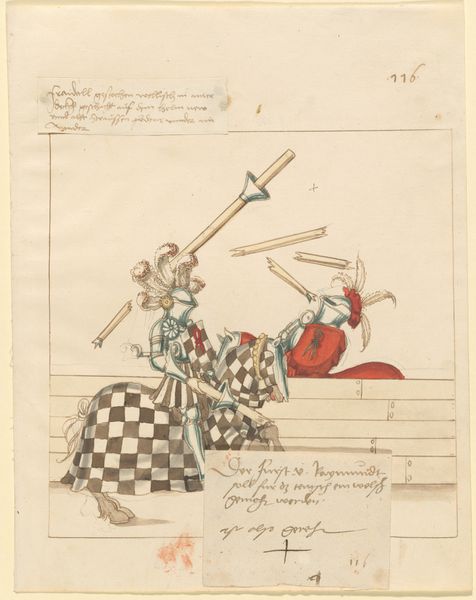
drawing, coloured-pencil, watercolor
#
drawing
#
coloured-pencil
#
narrative-art
#
figuration
#
watercolor
#
coloured pencil
#
watercolour illustration
#
history-painting
#
italian-renaissance
Dimensions: sheet: 33.5 × 26.2 cm (13 3/16 × 10 5/16 in.)
Copyright: National Gallery of Art: CC0 1.0
Curator: This is an intriguing piece entitled "Italian Joust of Peace," a drawing using colored pencil and watercolor, made circa 1512-1515 by an anonymous artist. Editor: Well, the first thing that strikes me is how much it isn't peace. There's total carnage on the ground, lances shattered, and a helmet rolling away! Curator: Indeed! The apparent contradiction in the title raises crucial questions. Is "peace" meant ironically, highlighting the underlying violence even in ritualized events? Or could it represent aspirations for order and diplomacy in a fractious era? We must remember that these displays of power were intertwined with political maneuverings. Editor: Right, because underneath all that finery and colorful spectacle, it's really about dominance. I'm fascinated by how meticulously the artist rendered the knights’ armor, down to the very last plume, juxtaposed against the chaotic aftermath. The movement feels suspended. Curator: Absolutely. The Italian Renaissance was a period characterized by evolving socio-political systems, marked by distinct displays of power and honor within courts and territories. Examining visual culture—heraldry and clothing, as evident here—serves to expose cultural structures during this epoch. Editor: All those blue and red stripes! So vivid, yet so fragile looking on the aged paper. You know, I wonder about the artist. Did they witness an actual joust, capturing the moment after the clash, or was it a kind of re-enactment, dreamed up? Curator: The perspective hints at a documentarian’s approach, possibly someone embedded within the court who was cataloging, recording, and creating lasting records. I would contend that this also is meant to showcase societal standards around heroism, bravery, and spectacle within that social frame. Editor: Hmmm. It all feels very bittersweet, thinking about the artist recording all this power and then... well, centuries later, here we are talking about the dust settling after the fight. Thanks for laying down the context! Curator: Likewise, your insights brought out a much-needed reminder that history paintings are ultimately reflections on fleeting moments and constructed legacies. It provokes further investigation into intersectional Renaissance histories of state, power, and visual culture.
Comments
No comments
Be the first to comment and join the conversation on the ultimate creative platform.
